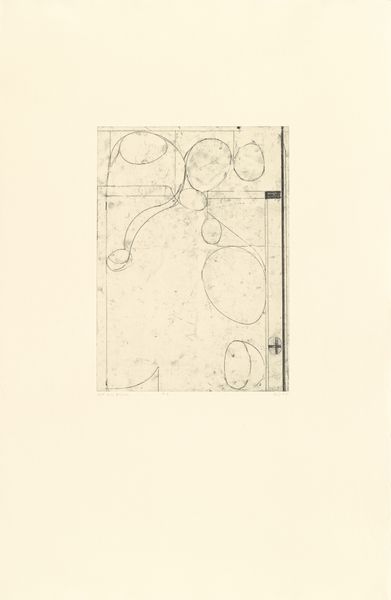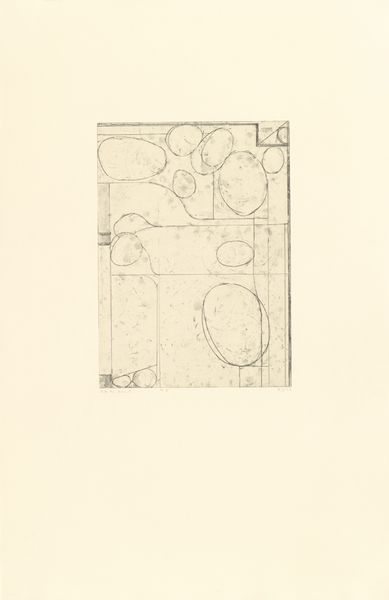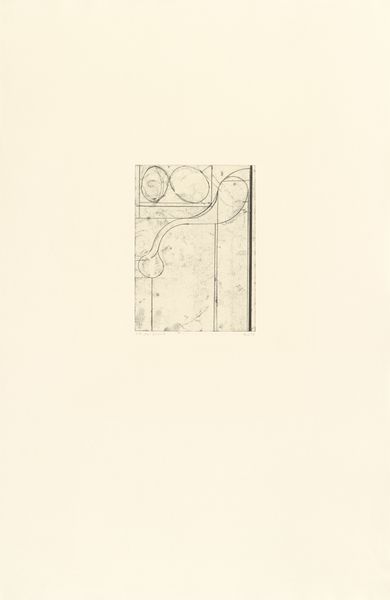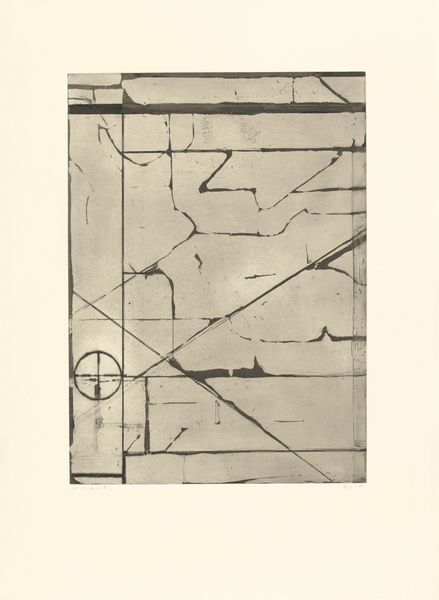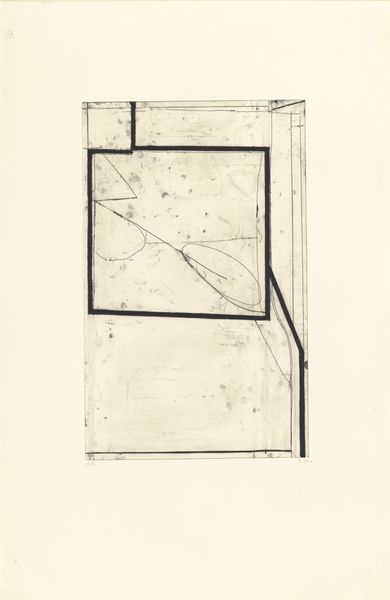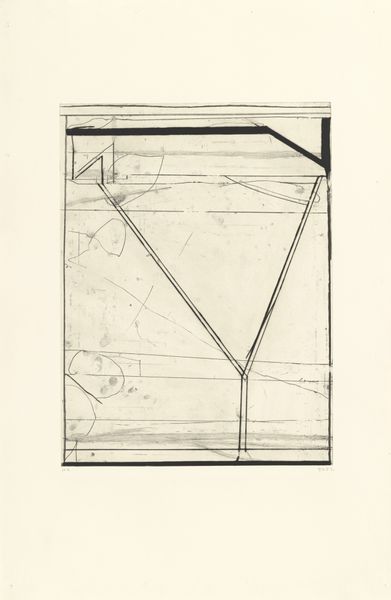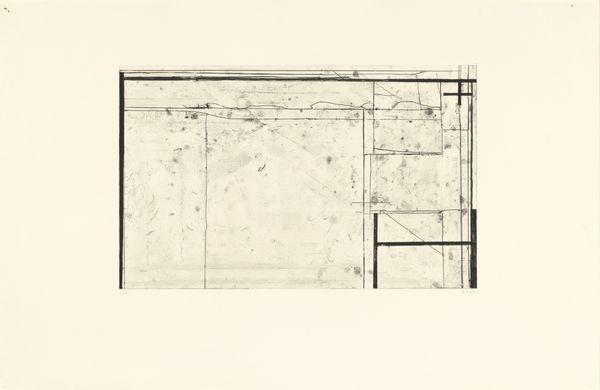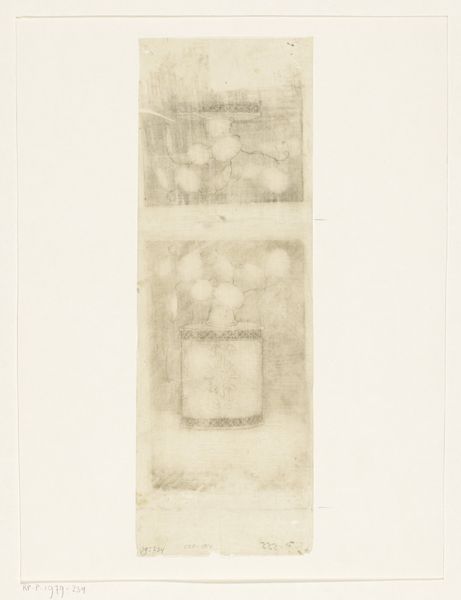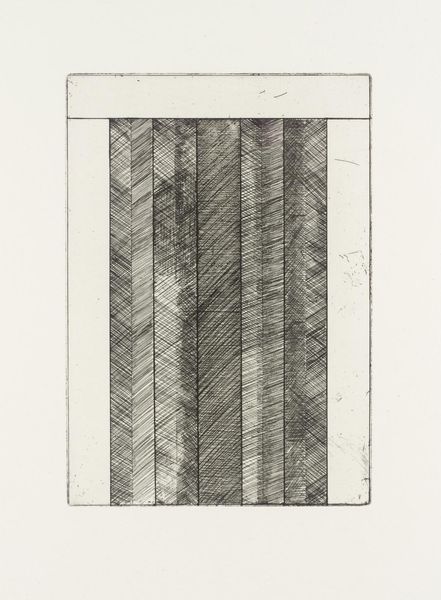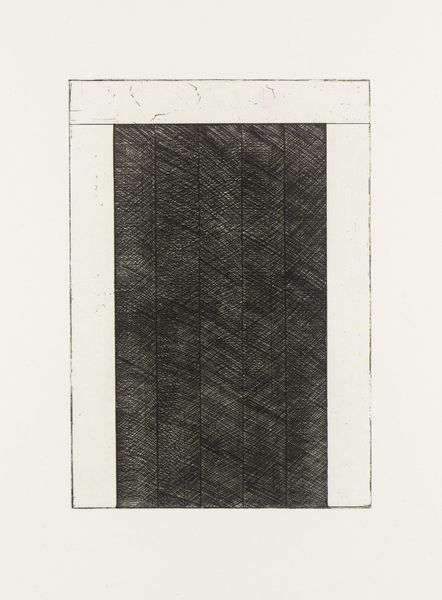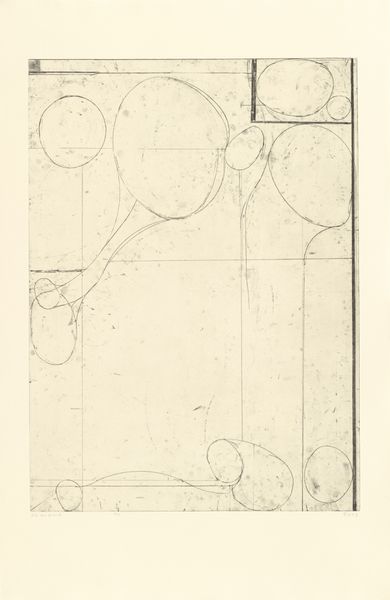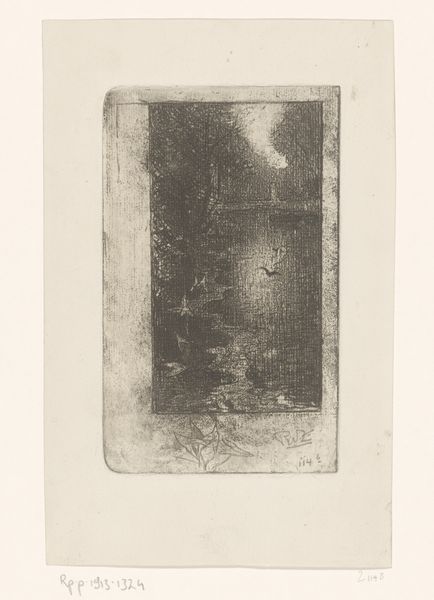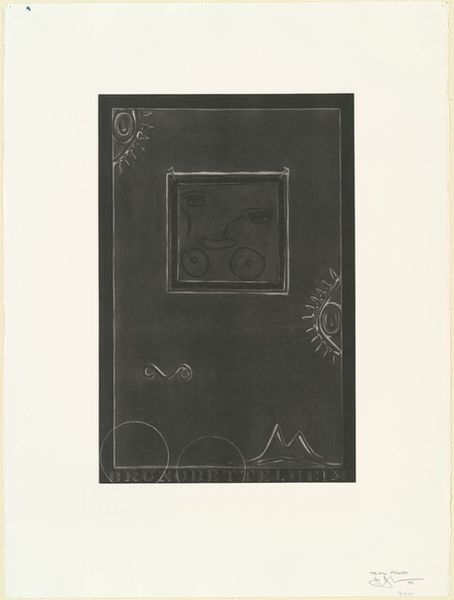
#
bay-area-figurative-movement
Dimensions: image: 44.1 x 32.1 cm (17 3/8 x 12 5/8 in.) sheet: 101.6 x 66 cm (40 x 26 in.)
Copyright: National Gallery of Art: CC0 1.0
Curator: Richard Diebenkorn’s “#2”, created in 1978, invites us to consider the power of simple forms. The print, composed of graphite on paper, presents an intimate look into the artist's process. Editor: It strikes me as intentionally unfinished, even a bit tentative. There’s a quietness in the composition, the soft graphite lines sketching out geometric and organic shapes with such delicate confidence. Curator: Indeed. Diebenkorn was working within a moment of Post-Minimalism, grappling with the legacy of abstract expressionism and the rise of conceptual art. Pieces like this demonstrate an intimacy and introspection that stand in contrast to the grand gestures often associated with those movements. They move towards a kind of quiet deconstruction. Editor: The composition feels both structured and intuitive. We see this grid of implied lines against free-flowing curves, circles. I wonder how he negotiated the tension between the hard geometry and soft figuration? It's almost like two artists working on the same plane, creating a dialogue of shape. Curator: The contrast you observed is indeed key to understanding Diebenkorn's overall approach. While committed to abstraction, Diebenkorn insisted that his works evoke space and place, reflecting the artist's surroundings and emotional landscape. The artwork may be regarded as part of Diebenkorn's investigation into representing the world abstractly. Editor: Looking again, it also emphasizes process—the visibility of corrections and re-tracings. It almost gives us permission to see artmaking not as some magical unveiling but as deliberate work. Curator: Exactly. And, by presenting us with the process, Diebenkorn challenges conventional expectations and notions around skill and authorship in an era dominated by ideas about the death of the author. This period marked the rise of artist as cultural producers and artwork became more than self-expression, it took on new dimensions as cultural signs. Editor: Considering your reading, it’s striking to note that its humbleness becomes quite potent in light of its cultural context. The raw quality becomes really provocative, a challenge. Curator: The effect resonates even today, a reminder that within simplicity and vulnerability, an artwork finds authenticity, reflecting on shifting tides of cultural currents. Editor: For me, the piece speaks about balance – how seeming opposites meet and, rather beautifully, create equilibrium.
Comments
No comments
Be the first to comment and join the conversation on the ultimate creative platform.
